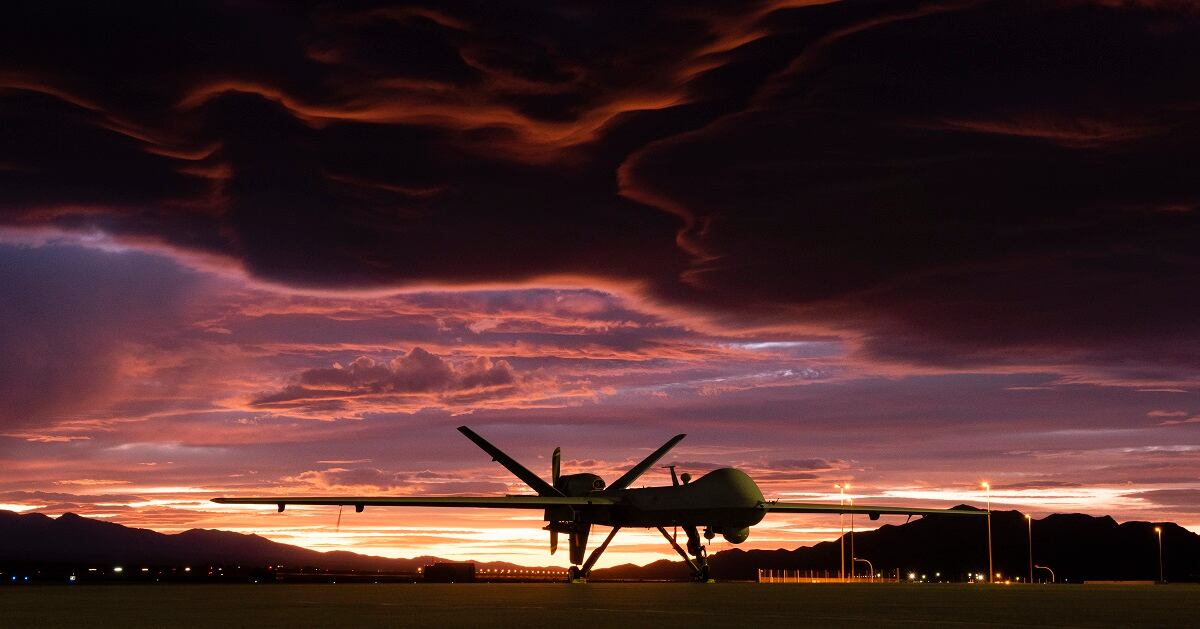On Aug. 29, days after a suicide attack that claimed the lives of 13 U.S. troops, the Defense Department carried out a drone strike it claimed intercepted a car bomb targeting Hamid Karzai International Airport. According to DoD officials, “significant” secondary explosions confirmed a successful over-the-horizon strike on a legitimate target. But several civilians were killed in the attack, leading to questions about the Biden administration’s aim to lean on an “over-the-horizon” approach to fight terrorism in places such as Afghanistan.
While over-the-horizon capabilities, such as drones and intelligence collection, have grown significantly over the years, Washington should lay out a specific counter-terrorism strategy before utilizing it, specifically in a place such as Afghanistan, experts told Military Times.
Prosecuting an over-the-horizon counter-terrorism campaign against ISIS-K in Afghanistan needs to be part of a larger strategic picture laid out by Washington, said Wes Bryant, former Air Force Joint Terminal Attack Controller. Without it, such operations in Afghanistan run the risk of “us continuing down the road to nowhere.” Further, strikes against ISIS-K would primarily benefit the Taliban, a group Bryant describes as having “similar” goals to the Taliban with a “near-equal history of oppression, brutality, and atrocities.”
“So, before a real over-the-horizon campaign in Afghanistan is initiated, our leadership—political and military—need to really ask themselves, and answer to the American people, the one fundamental question: Toward what end?” Bryant, who retired in 2018 as a master sergeant after 20 years in uniform, told Military Times.
An early example of an effective and targeted over-the-horizon strike occurred in 1986 when then-President Ronald Regan ordered airstrikes on targets in Libya. The strikes were carried out from as far as airfields in England and were in response to Libyan state sponsorship of terrorism, with the catalyst was a nightclub bombing in Berlin that claimed the life of a U.S. service member.
“You can go back to the Reagan strike in Libya,” retired Air Force Brig. Gen. Robert Holmes told Military Times, “It looked like a bombing, but it was an over-the-horizon response to terrorism.” Holmes spent his career commanding Air Force special tactics units, including directing the Inter-Agency Task Force at U.S. Special Operations Command.
This ability has only grown more robust over nearly three decades.
“There are a lot of aircraft that could conduct strikes being termed an “over the horizon capability,” Bryant said. “Really,[over-the-horizon] is a new term for something we’ve been doing for years.”
According to Bryant, the beginning of the campaign in Iraq and Syria against ISIS in 2014 represents a further evolution in over-the-horizon development when DoD implemented “strike cells” to run targeting operations. Advancements in signals intelligence collection, along with “persistent surveillance,” enabled U.S. personnel to hit ISIS targets with relative impunity, often without personnel on the ground.
“There is nothing to say that JTACs on the ground will lead to better, cleaner targeting than in a Strike Cell,” Bryant said. “The capabilities we have from our Strike Cells combined with the rest of our targeting and intelligence bodies are incredible.”
According to Bryant and Holmes, OTH was on display in Afghanistan before U.S. forces entirely withdrew from the country. On Aug 27, two ISIS-K militants, identified by the Pentagon as a “planner” and a “facilitator” for the terrorist organization, were killed in Nangahar province. This was followed by the Aug 29. strike, which the Pentagon said was against a potential car bomb targeting HKIA.
“The president has made it very clear that we will maintain robust over-the-horizon counter-terrorism capability, the kinds of capabilities that you’ve seen us use in just the last 24/36 hours,” Pentagon Press Secretary John Kirby said at a press conference on Aug 30, “We still have that capability. We will use that capability.”
However, according to experts that Military Times spoke to, there is still a degree of on-the-ground coordination required. Specifically, the need for local cooperation and basing, as while the range of drones and surveillance reach has increased, it is not infinite.
Regional allies, said Bryant, such as the Gulf Cooperation Council, and other partners, should be able to provide bases from which drones and other over-the-horizon assets could operate, despite the increased distance now needing to be covered to get into the “battlespace.”
“Our modern drone fleet can provide flight times of 20 to 40 hours with persistent surveillance,” Bryant said. “Yes, transit times will be long, but overhead times will still be considerable, and working overlapping flights is fairly standard with persistent overhead surveillance.”
Persistent overhead surveillance is critical for these kinds of strikes, as it enables a target to be precisely identified. Further, this constant “eyes on” allows operators to map out any civilian presence through a “pattern of life” analysis and pick a “strike weapon” that minimizes the risk to civilians.
A “strike weapon” isn’t strictly limited to drones either. Fighter jets can carry any number of munitions, or even B-52′s and cruise missiles are available for an over-the-horizon strike. The key is that the target is verified by multiple independent pieces of intelligence with being able to have “eyes on” the target being the key.
However, while Bryant and Holmes are confident that the U.S. has a robust ability to both identify and hit targets where there is little to U.S. presence, the idea of continuing operations in Afghanistan raises questions.
“If our answer is because the Taliban no longer pose a threat to the security of the United States while ISIS-K does, well, I think that’s very naïve and short-sighted,” Bryant said.
James R. Webb is a rapid response reporter for Military Times. He served as a US Marine infantryman in Iraq. Additionally, he has worked as a Legislative Assistant in the US Senate and as an embedded photographer in Afghanistan.





